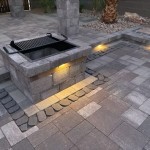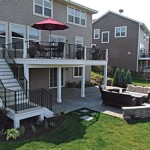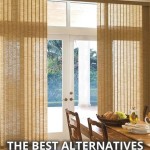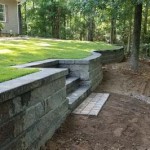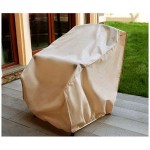Metal Roof Patio Cover Designs: Durability and Style Elevated
Patio covers provide a valuable extension of living space, offering protection from the elements and creating a comfortable outdoor environment. Among the various material options available for patio cover construction, metal roofing stands out for its durability, longevity, and aesthetic appeal. This article explores the diverse design possibilities afforded by metal roof patio covers, examining their advantages, common styles, and key considerations for implementation.
Metal roofing is a broad category encompassing various types of metals, each with unique characteristics. Common choices for patio covers include aluminum, steel (galvanized or coated), and copper. Aluminum is lightweight and corrosion-resistant, making it suitable for coastal environments. Steel offers superior strength and is often coated with protective layers to prevent rust. Copper is a premium option, prized for its distinctive appearance and natural patina that develops over time. The selection of metal type will influence the overall cost, structural requirements, and aesthetic qualities of the patio cover.
The benefits of using metal roofing for patio covers are numerous. Metal is exceptionally durable, withstanding harsh weather conditions such as heavy rain, snow, and strong winds. It is also fire-resistant, providing an added layer of safety. Metal roofs have a long lifespan, often exceeding 50 years, making them a cost-effective investment in the long run. Furthermore, metal roofs are relatively low-maintenance, requiring minimal upkeep compared to other roofing materials. They are also environmentally friendly, as they are often made from recycled materials and are recyclable at the end of their lifespan. Finally, the reflective properties of metal roofing can help reduce heat absorption, contributing to a cooler outdoor space.
Types of Metal Roof Patio Cover Designs
The design possibilities for metal roof patio covers are extensive, accommodating a wide range of architectural styles and personal preferences. The following are some common design types:
Attached Patio Covers: These covers are directly connected to the house, extending from an existing wall. They can be supported by posts or columns, creating a seamless transition between indoor and outdoor living spaces. Attached patio covers are advantageous for their convenience and ease of access to the home.
Freestanding Patio Covers (Pergolas with Metal Roofing): Freestanding covers, also known as pergolas with metal roofing, are independent structures that are not attached to the house. They can be positioned anywhere in the yard, providing a focal point and creating a designated outdoor living area. These structures often feature decorative posts and beams, enhancing their aesthetic appeal. The metal roofing provides a solid, weatherproof shelter not typically found in traditional pergola designs.
Gable Roof Patio Covers: Gable roofs are characterized by their triangular shape, with two sloping sides that meet at a ridge. This design allows for efficient water runoff and provides ample headroom. Gable roofs are a popular choice for patio covers due to their classic look and structural integrity. They also allow for ventilation, which can help reduce heat buildup under the cover.
Shed Roof Patio Covers: Shed roofs have a single sloping plane, offering a simple and contemporary aesthetic. This design is often used for attached patio covers, as it can be easily integrated with the existing roofline of the house. Shed roofs are also effective at diverting water away from the home.
Curved Roof Patio Covers: Curved roofs provide a more modern and sophisticated look. They can be designed with varying degrees of curvature, creating a unique and eye-catching feature. Curved roofs require specialized construction techniques and may be more expensive than other types of metal roofing.
Lattice Metal Roof Covers: This design combines the open feel of a lattice structure with the weather protection of a metal roof. Strips of metal are placed with gaps in between, providing partial shade and allowing for ventilation. This option offers a balance between sunlight and shelter.
Combination Designs: It's common to see combinations of the above styles. For example, a gable roofed section could be attached to a house, transitioning to a freestanding pergola section with lattice metal roofing. This allows for varied use of the patio space.
Key Considerations for Design and Installation
Careful planning and execution are essential for a successful metal roof patio cover project. Factors such as local building codes, structural integrity, and aesthetic considerations should be taken into account. The following are some key considerations:
Building Codes and Permits: Before starting any construction project, it is crucial to check local building codes and obtain the necessary permits. Building codes regulate various aspects of construction, including structural requirements, fire safety, and drainage. Failure to comply with building codes can result in fines and delays.
Structural Integrity: The patio cover must be structurally sound to withstand wind loads, snow loads, and other environmental factors. A structural engineer should be consulted to ensure that the design is adequate for the local climate and soil conditions. The size and spacing of the posts, beams, and roofing supports must be carefully calculated to ensure the stability of the structure. The type of metal used will also influence the structural requirements.
Drainage: Proper drainage is essential to prevent water damage and ensure the longevity of the patio cover. The roof should be sloped to allow water to flow away from the house and into a designated drainage area. Gutters and downspouts may be necessary to collect and divert rainwater. The design should also consider the potential for ice dams in colder climates.
Aesthetic Considerations: The patio cover should complement the architectural style of the house and blend seamlessly with the surrounding landscape. The color, texture, and style of the metal roofing should be carefully selected to achieve the desired aesthetic effect. Consider the existing color palette of the house and choose a metal finish that complements it. The design should also take into account the views from the patio cover and ensure that they are not obstructed.
Lighting and Electrical: Integrating lighting and electrical outlets into the patio cover can enhance its functionality and ambiance. Lighting can be used to create a warm and inviting atmosphere, while electrical outlets can power appliances, entertainment systems, and other devices. Wiring should be concealed and protected from the elements. Consider adding recessed lighting in the roof or pendant lights hanging from the beams. Outdoor-rated electrical outlets should be installed for convenience.
Ventilation: Adequate ventilation can help reduce heat buildup under the patio cover, making it more comfortable during hot weather. Vents can be installed in the roof or walls to allow for airflow. Open lattice designs also promote ventilation. Consider the prevailing wind direction when designing the ventilation system.
Professional Installation: Metal roofing installation requires specialized skills and knowledge. Hiring a qualified and experienced contractor is essential to ensure that the job is done correctly. A professional contractor will be familiar with local building codes, have the necessary equipment, and be able to handle any challenges that may arise during the installation process. Verify the contractor's licensing and insurance before hiring them.
Material Selection: The type of metal chosen will influence the overall aesthetic, cost, and performance of the patio cover. Aluminum is lightweight and corrosion-resistant, but it is not as strong as steel. Steel is more durable and cost-effective, but it requires a protective coating to prevent rust. Copper is a premium option that offers a unique aesthetic and natural patina. Consider the climate, budget, and desired aesthetic when selecting the metal type.
Cost Considerations: Metal roof patio covers generally have a higher upfront cost compared to other materials like wood or fabric. However, the long lifespan and low maintenance requirements of metal roofing can make it a cost-effective investment in the long run. Obtain multiple quotes from different contractors and factor in the cost of materials, labor, permits, and any necessary structural modifications.
Design Elements and Customization Options
Beyond the fundamental design choices, various elements can be incorporated to personalize and enhance the functionality of a metal roof patio cover. These include:
Color Selection: Metal roofing is available in a wide range of colors, allowing for customization to match existing architectural elements or create a contrasting visual statement. Darker colors tend to absorb more heat, while lighter colors reflect sunlight and keep the area cooler. Consider the overall color scheme of the house and surrounding landscape when selecting the color of the metal roofing.
Texture and Finish: Metal roofing can have various textures and finishes, such as smooth, ribbed, or textured. The finish can be matte, glossy, or metallic. The choice of texture and finish can significantly impact the overall appearance of the patio cover. Consider the desired aesthetic and the level of maintenance required when selecting the texture and finish.
Support Structures: The posts and beams that support the metal roof can be customized to complement the overall design. Wood, metal, or composite materials can be used for the support structures. Decorative elements, such as columns, arches, or carvings, can be added to enhance the aesthetic appeal. The style and material of the support structures should be consistent with the overall architectural style of the house and patio cover.
Accessories: Various accessories can be added to enhance the functionality and aesthetics of the patio cover. These include ceiling fans, heaters, screens, and curtains. Ceiling fans can provide cooling during hot weather, while heaters can extend the use of the patio into the cooler months. Screens can protect against insects, while curtains can provide privacy and shade. The choice of accessories should be based on the specific needs and preferences of the homeowner.
Integration with Landscaping: The patio cover should be integrated seamlessly with the surrounding landscaping. Planting trees, shrubs, and flowers around the patio cover can create a more inviting and natural setting. Consider the sunlight and shade patterns when selecting plants. Adding a water feature, such as a fountain or pond, can also enhance the ambiance of the outdoor space.
Fire Pits and Outdoor Kitchens: Integrating a fire pit or outdoor kitchen into the patio cover design can create a versatile outdoor entertainment space. Fire pits provide warmth and ambiance, while outdoor kitchens allow for convenient meal preparation and serving. Ensure that the fire pit or outdoor kitchen is properly ventilated and meets all safety requirements.
Metal roof patio covers offer a durable, stylish, and long-lasting solution for creating comfortable and functional outdoor living spaces. By carefully considering the design options, key considerations, and customization possibilities, homeowners can create a patio cover that meets their specific needs and enhances the beauty of their property. The selection of materials, design style, and installation method are all critical factors that contribute to the overall success and longevity of the patio cover. Metal roofs, when properly installed, can provide decades of protection and enjoyment, adding value and appeal to any home.

57 Stunning Patio Roof Ideas To Transform Your Outdoor Space Design Backyard Porch

20 Best Patio Cover Ideas Covered Designs

Roof Design Recommendations I Would Like To Construct A Patio Structure With Jonathan C 10 18 2024 Is Metal Right For My House Roofing Alliance Forum

Corrugated Metal Patios

57 Stunning Patio Roof Ideas To Transform Your Outdoor Space Covered Design Backyard

Patio Cover I Am Interested In Building A With Scott Ross 7 27 2024 Is Metal Roof Right For My House Roofing Alliance Forum

Building A Patio Cover Plans For An Almost Free Standing Roof

20 Best Patio Cover Ideas Covered Designs

How To Build A Patio Cover With Corrugated Metal Roof Building

4 Patio Roof Designing Ideas Verbal Gold Blog
Related Posts


